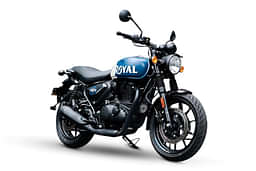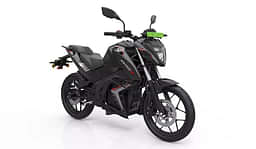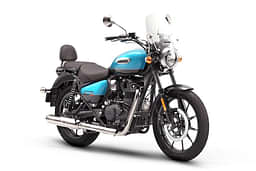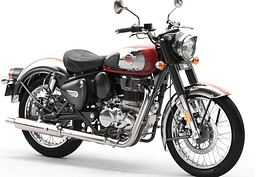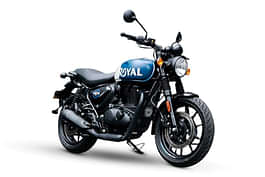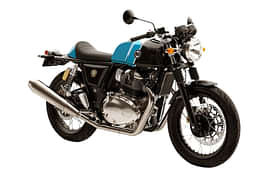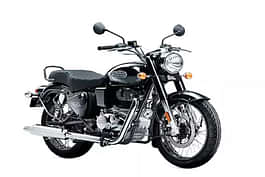
Royal Enfield Hunter 350 has launched in India starting from Rs 1.49 lakh. The closest rival sibling is the Classic 350. Read the comparison between both below.
Royal Enfield Hunter 350 has made its official debut in the Indian market. It has been priced between Rs 1.49 - 1.69 lakh ex-showroom Chennai. This new bike promises to offer an agile and fun performance. However, the engine has been carried from the most popular bike from the company i.e. the Classic 350. Here, we compare both of these bikes neck-to-neck and tell you the main differences between the two.
Also Read - Royal Enfield Hunter 350 Variants - Top 5 Differences
Design & Features
Hunter is the most compact and lightest bike from Royal Enfield. The overall design has been crafted to provide a more modern and generic bike outlook. Even the dimensions are pretty compact when compared to the other siblings. It weighs only 177 kg wet for the Metro variant. Additionally, the Hunter is feature equipped too. With its semi-digital instrument panel, the Hunter offers multiple pieces of info to the rider on the go. A lot of accessories are available for Hunter via two various accessory kits.
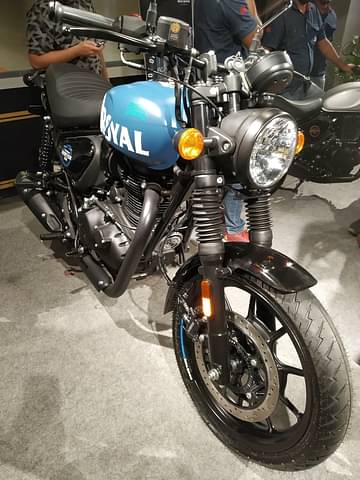
However, the Classic is an iconic bike well-known for its retro design. The overall outlook of Classic resembles the old 60s-era motorcycles that offered a balance of riding comfort and butch looks. Classic 350 has been equipped with a different analog speedometer with a small digital MID. This MID shows the important info like two trip meters, odometer, etc., to the rider. The outlook is different from Hunter but the work remains the same.
Additionally, it is the Hunter that offers the Tripper Navigation as an optional accessory. Meanwhile, the Classic 350 misses out on this feature as an option.
Engine
Both of these bikes have been designed on the latest J platform. The engine is a new BS6 compliant 350cc, single-cylinder unit. This air-cooled engine churns out a peak power of 20.2 hp and 27 Nm of peak torque. A 5-speed gearbox is being used in both of these bikes for transmission purposes.
So, what's the difference? See, the Classic has been tuned for a relaxed and laid-back riding experience. The gear ratios and the ECU tuning have been done to provide good mid-range and low-end torque. The overall nature Classic is to move at a steady pace and not in a jiffy. The ARAI-claimed fuel economy of Classic stands at 40.8 kmpl. Whereas, the ARAI-claimed fuel economy for Hunter is 36.2 kmpl.
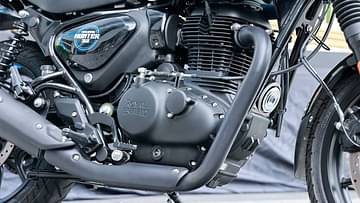
Hunter, however, has been designed for an agile and peppy city performance. Hence, the engine has got a new revised ECU to remap. This means the power surge is now more linear and the torque curve is relatively more flat. This helps in achieving a peppy low-speed performance which makes it more enjoyable inside the city traffic. The gear ratios have also been fiddled with and the 5th gear is now an overdrive for more relaxed highway cruising.
Also Read - Royal Enfield Hunter 350 Official Accessory Kits Priced at Rs 18,160
Chassis & Specifications
Speaking of the chassis, both of these bikes have got the same underpinnings. But, the catch is that the Hunter has received a reworked rake angle for the steering and hence the overall geometry has been changed. The rake angle is 1 degree sharper than the Classic 350 and so is the trail which has come down to 96.4mm from 111.7mm. This has also resulted in a reduction of 20mm in the wheelbase.
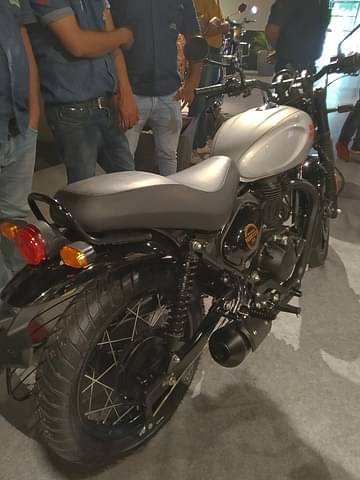
These design changes have been done to accommodate the low steering inertia so that the Hunter can be more agile. Well, this is what the basic theory was when the company started off with the project Hunter. An agile, affordable, and nimble bike. In fact, the Hunter is 14 kg lighter than the Classic hence making it easier to handle. The seat height for Classic is 805mm while the Hunter has 800mm.
Due to its redone chassis engineering and centrally aligned weight, the Hunter comes with a 17-inch tyre setup at both ends. Meanwhile, the Classic 350 comes with a 19-inch front and 18-inch rear tyre setup.
For more automotive updates, stay tuned to 91Wheels YouTube channel.
